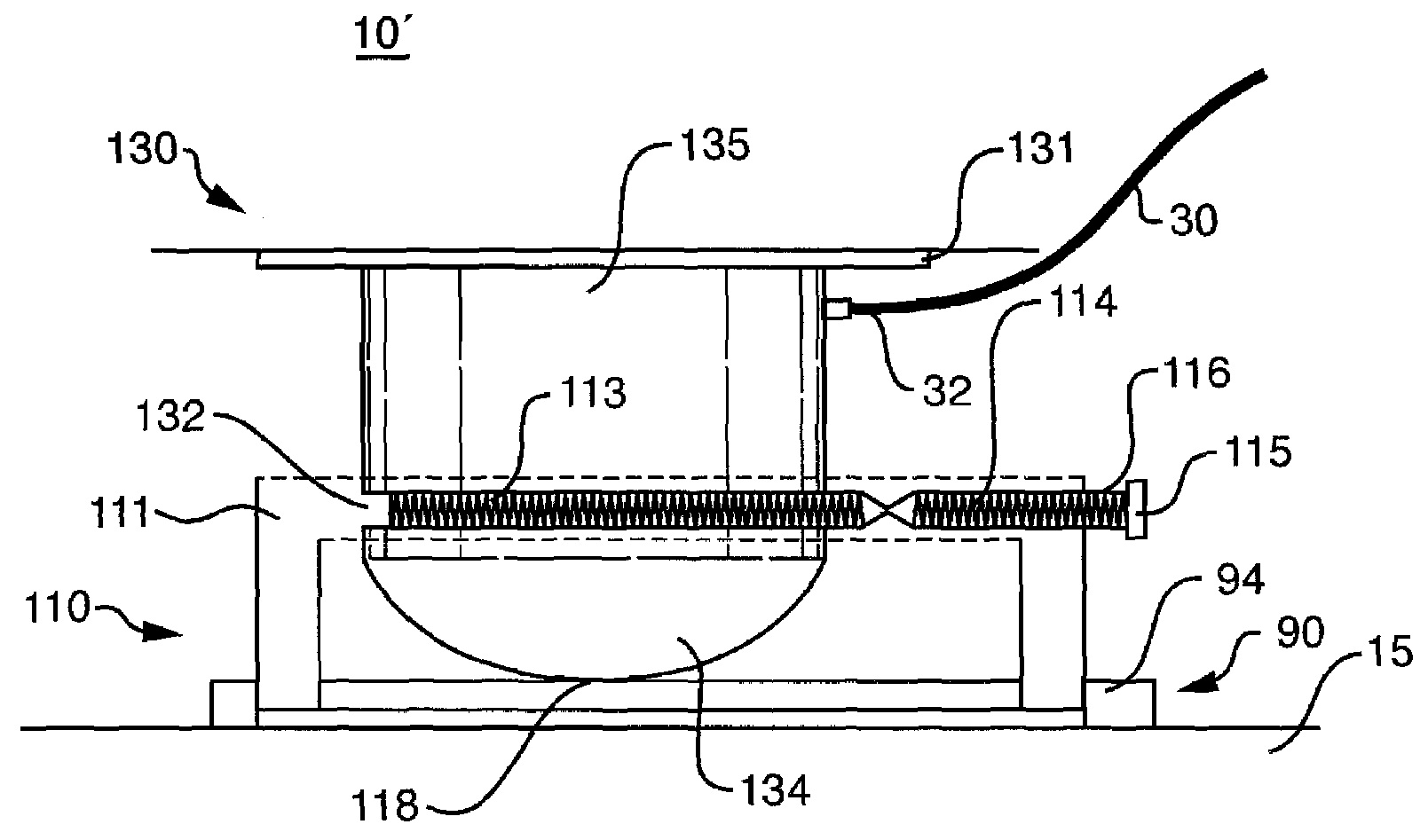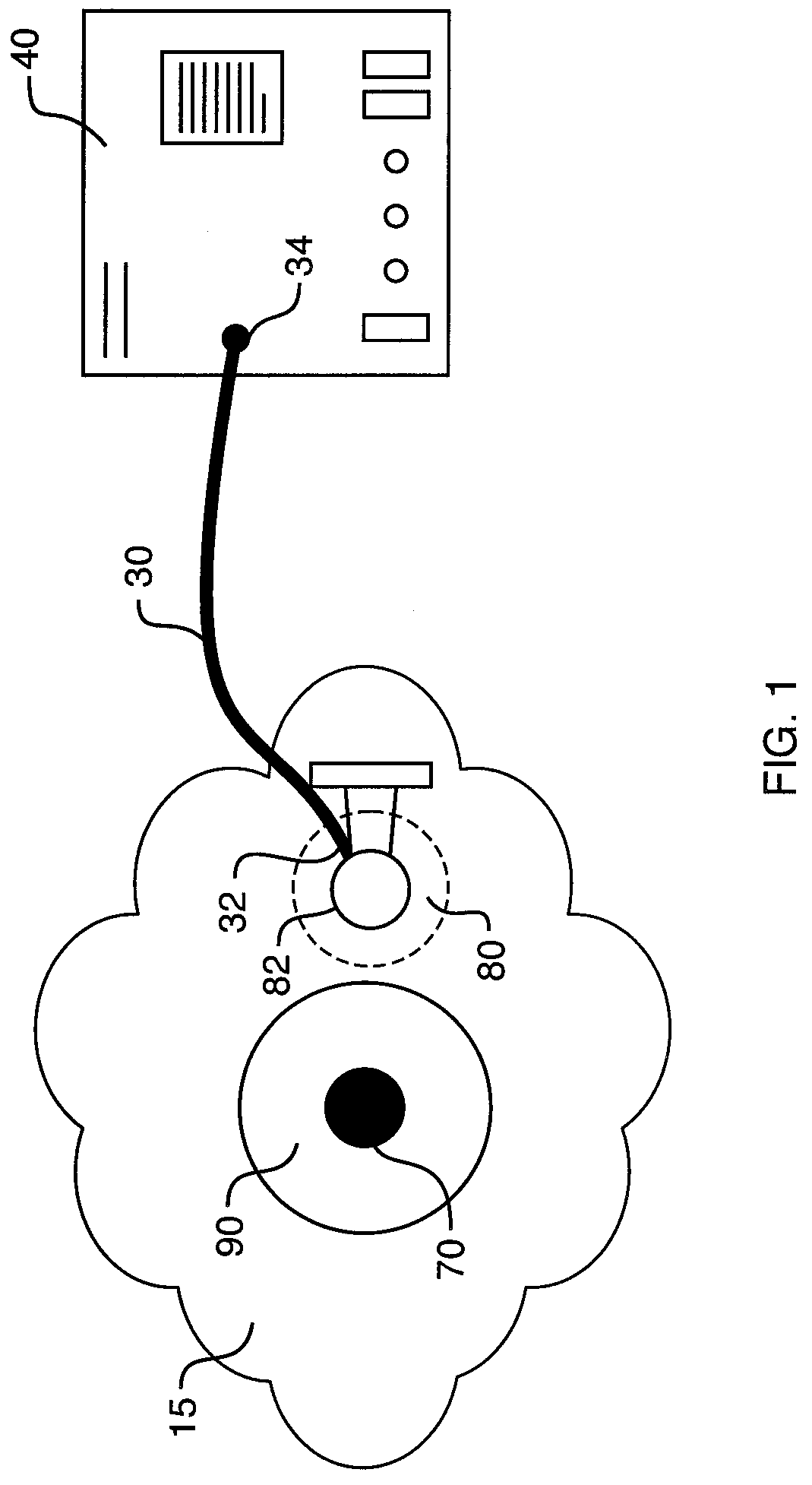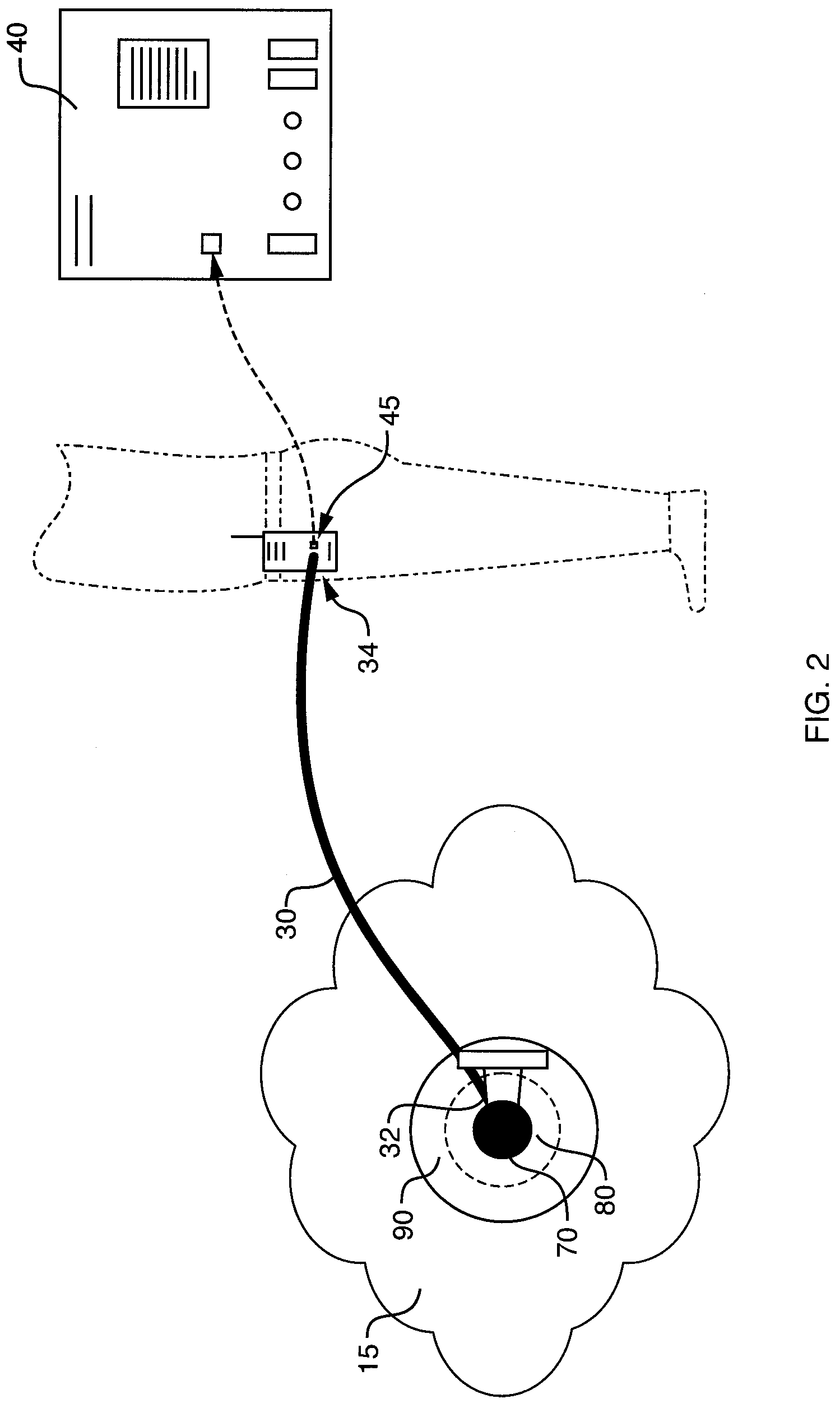Electrode connection system
a technology of electrical connections and connections, applied in the field of electrical connections, can solve the problems of harming patients, inaccurate data generated by the machine afterwards, and affecting the patient's condition, and achieve the effect of convenient and secure connection
- Summary
- Abstract
- Description
- Claims
- Application Information
AI Technical Summary
Benefits of technology
Problems solved by technology
Method used
Image
Examples
first embodiment
[0037]A first arrangement of the present invention of an electrode connection system 10, shown in FIGS. 1-6, includes a first connecting member 70, a second connecting member 80 connected to an electrode wire 30, and an optional substrate attachment device 90. The first connecting member 70, which is an electrode, is attachable to a substrate 15 by way of the substrate attachment device 90. The order in which all connection and attachment steps (regarding all arrangements and embodiments of the invention described herein) are performed is unimportant, and therefore they may be performed in any order.
[0038]The electrode wire 30 has a first end 32 and a second end 34. First end 32 is connected to the second connecting member 80 at a loop 82. Second end 34 is connectable to a monitoring device 40, as shown in FIG. 1. Alternatively, as shown in FIG. 2, the second end 34 is connectable to an optional transmitting device 45, which is capable of transmitting electrical signals or informati...
second embodiment
[0051]A first arrangement of the electrode connection system 11 of the present invention is shown in FIGS. 11-17. In FIG. 11, first connecting member 210 of the system 11 is shown as being disconnected from second connecting member 230. In FIG. 12, the first connecting member 210 and the second connecting member 230 are connected to each other. The same set of connections to the electrode 30 and the monitoring device 40 as previously described are also shown. It is to be noted that the electrode connection system 11 may also be connected to the optional transmitting device of FIG. 2.
[0052]As shown in FIGS. 13 and 14, in the first arrangement of the second embodiment of the present invention, first connecting member 210 includes a nub 211 which is connected to a substrate attachment device 90, which has attachment surface 92 and non-attachment surface 94. The nub 211 protrudes through the substrate attachment device 90 such that substrate contact face 212 of the member 210 is essenti...
PUM
 Login to View More
Login to View More Abstract
Description
Claims
Application Information
 Login to View More
Login to View More - R&D
- Intellectual Property
- Life Sciences
- Materials
- Tech Scout
- Unparalleled Data Quality
- Higher Quality Content
- 60% Fewer Hallucinations
Browse by: Latest US Patents, China's latest patents, Technical Efficacy Thesaurus, Application Domain, Technology Topic, Popular Technical Reports.
© 2025 PatSnap. All rights reserved.Legal|Privacy policy|Modern Slavery Act Transparency Statement|Sitemap|About US| Contact US: help@patsnap.com



